Feeling blue? Bogged down? May’s Patient of the Month is one that will surely deliver a refreshing dose of hope—or at least make you smile. 😄
We spent late March wondering, “Where are the fox kits?!” Typically, we admit our first orphaned kits shortly after the spring equinox. While opossums and baby songbirds began pouring in, our rabies-vector species nursery was comparably quiet. In mid-April, though, that first kit arrived.
Meet patient 25-071!
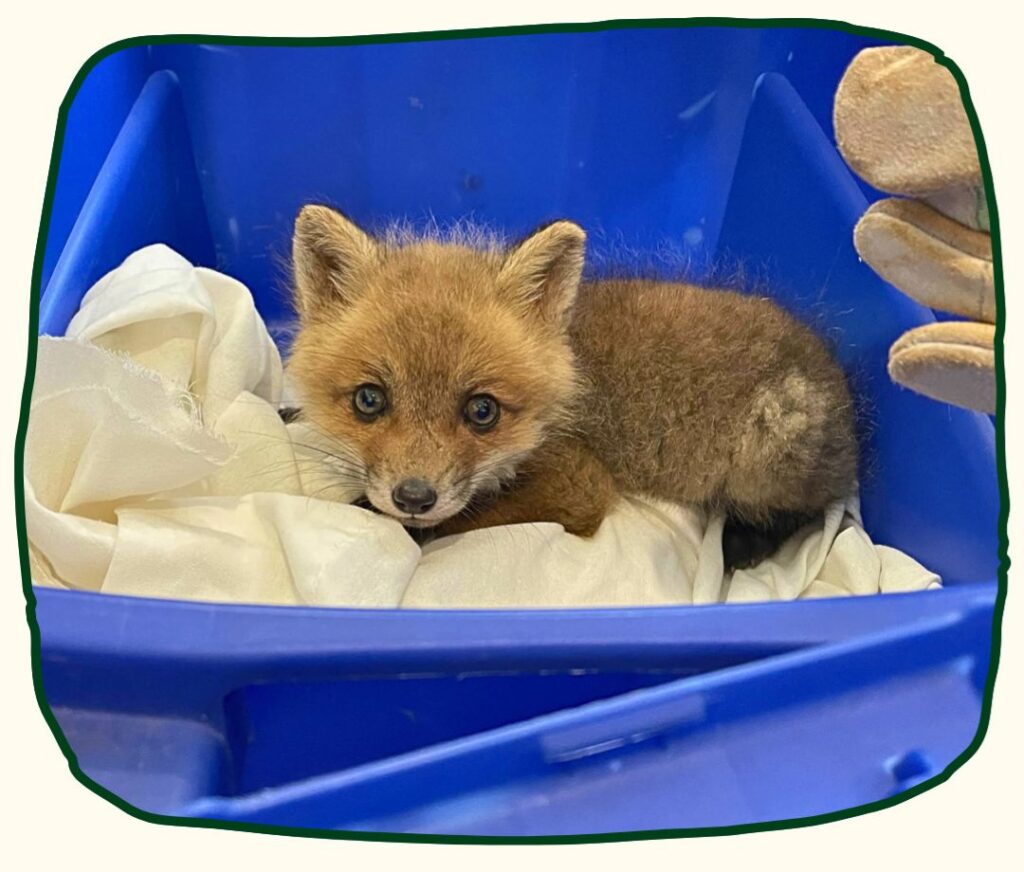
A perplexing rescue
This kit arrived under somewhat confounding circumstances. Spotted alone on a job site in Amherst County, the little male kit was picked up by a well-meaning finder and brought home for the night. Unfortunately, the finder was not willing to return to the job site to search for siblings or to attempt reuniting him with his family. They also said it was not possible to share where exactly the job site was. Further, the kit had already been fed canned tuna overnight. That might seem like a fine option, but the excessive sodium levels in canned fish can be dangerous for animals—especially for young wildlife who are not yet weaned off their mother’s milk.
Sadly, this situation happens so frequently in wildlife rehabilitation that our online patient record database even has a specific rescue circumstance option: “abduction with intent of rescue.” Without a known rescue location, we had no choice but to admit this little kit for rehabilitative care.
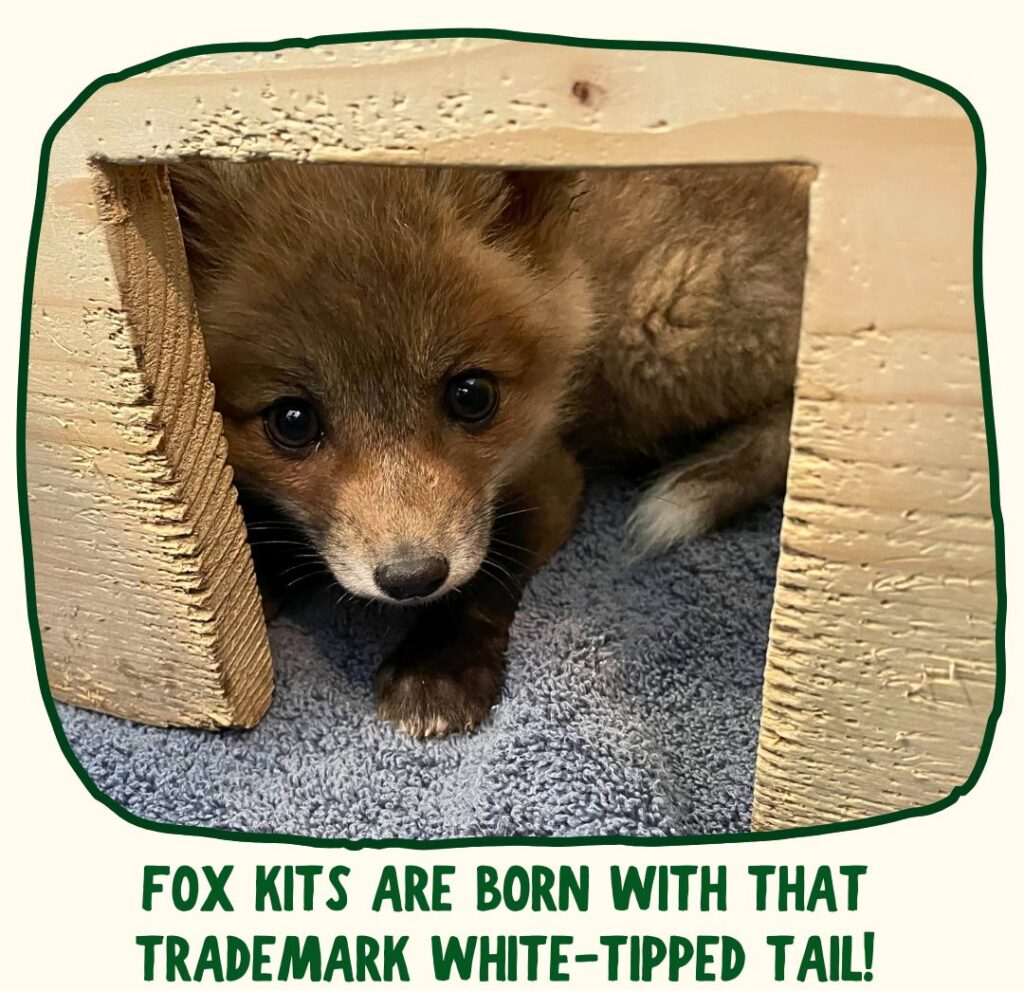
Our team then faced a challenge. Red fox kits are highly social animals from birth, and growing up alone in captive care can lead to severe stress and developmental problems…not to mention the risk of habituating to humans! As soon as we stabilized the new kit in our rabies-vector nursery, we immediately began the search for a conspecific (same species) buddy so our lone kit could have the vital company he’d need to be successful post-release.
Searching for fox kit friendship
For over two weeks, we worked tirelessly to find this youngster a fox friend while caring for over 100 other newly admitted patients. Our goal was to either transfer 25-071 to another licensed facility where he could join an established cohort, or to receive transferred kits at RWS to establish a cohort here. We called other centers across the state, emailed independent at-home rehabbers, and even posted about the lone kit in a special Facebook group just for licensed Virginia rehabbers. No dice. 😞

In the meantime, we made sure we kept 25-071 safe, satiated, and mentally stimulated! We added some additional soundproofing for our low-contact rabies-vector nursery room to prevent habituation to humans. The little kit had daily access to a monitored playpen filled with new substrates, novel enrichment items, and tasty natural foods soaked in a specialized fox formula to help him build confidence and natural behaviors. Check out some of the adorable trail camera footage we recorded of his first solo playpen session! ⬇️
A friend!
Finally: enter patient 25-172. 🦊 Our friends at the Wildlife Center of Virginia admitted the female kit in late April. She had been found alone in Charlottesville, darting nervously across St. Clair Avenue with no parents or littermates in sight. A Good Samaritan was able to safely contain her by using a blanket and wearing thick gloves. After a short stay at WCV for initial parasite treatment, the kit was transferred to RWS earlier this month for long-term rehabilitative care.
Introductions between red fox kits can be a bit dicey if they are not done with great patience. 😬 Our team took it slow, allowing the kits to smell and hear one another first through adjacent nursery enclosures. We then introduced them in a neutral playpen, monitoring their first interactions from next door thanks to the camera feed.
To our delight, 25-071 and 25-172 hit it off right away! After some tentative sniffs, the two were off to the races with play bows, zoomies, wrestling matches, and pounces galore. Fox kit play is very similar to how domestic dogs play, so the mutual roughhousing was a true relief to watch. Enjoy some trail cam screenshots from their meeting below! 🥹⬇️
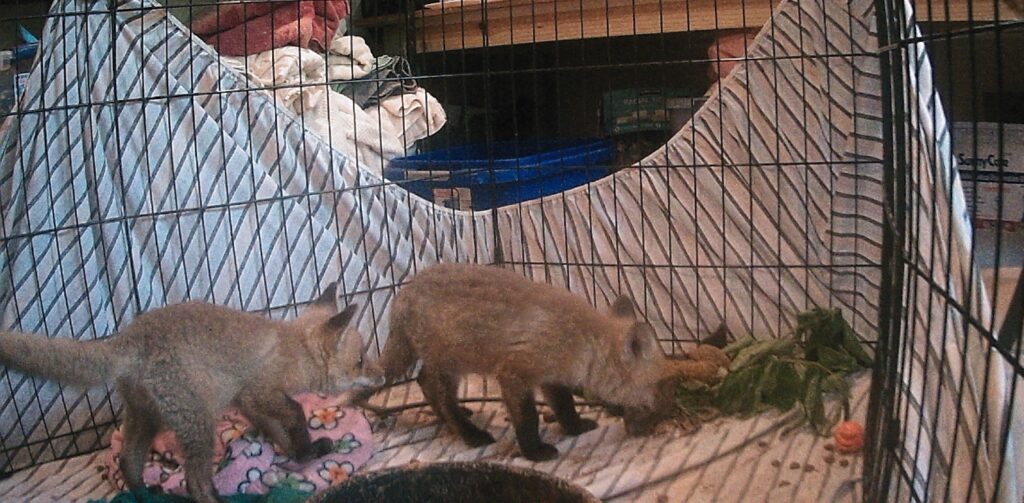
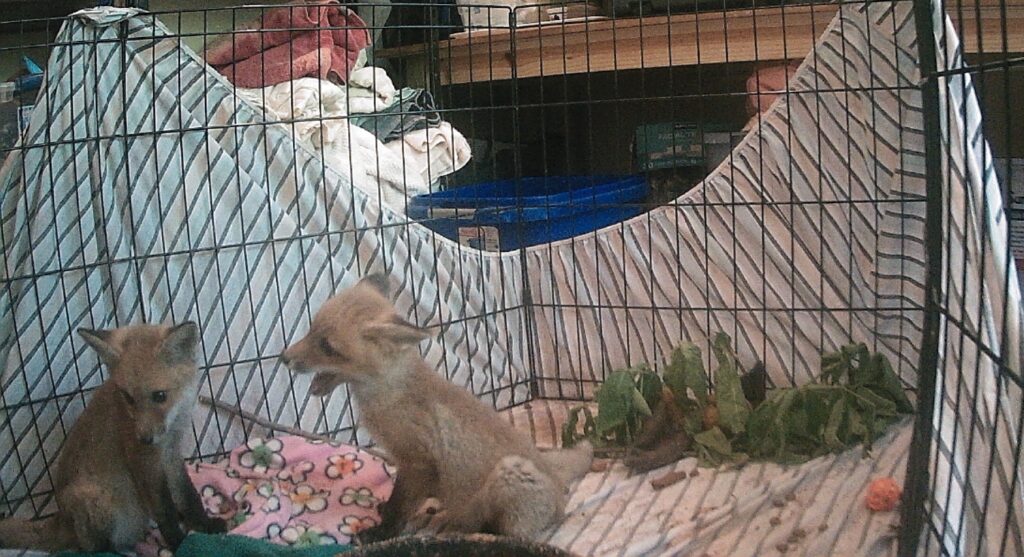
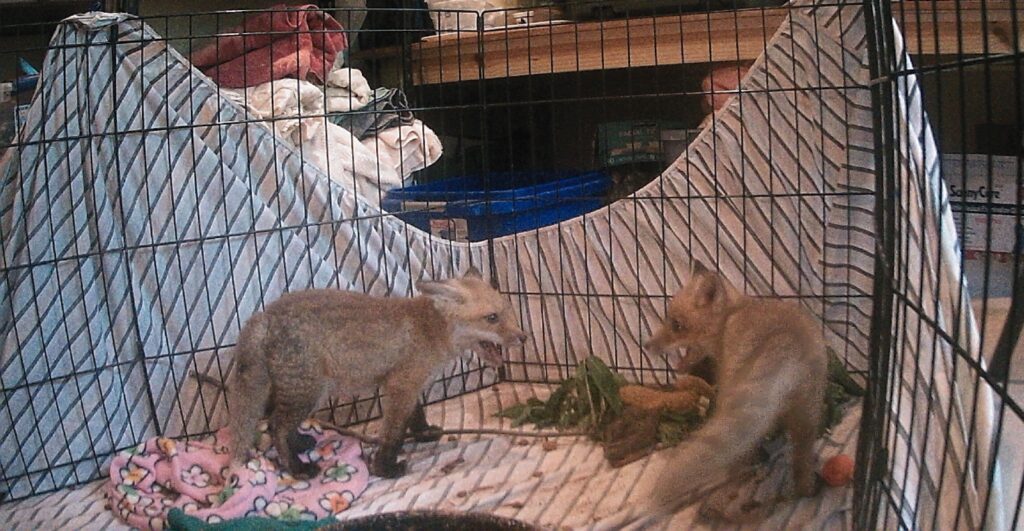


What’s next for the fox kits?
The dynamic duo is currently in the “field trip” stage of their treatment journey. Each step in that journey, as outlined on our website, is crucial to their post-release success. 🪜
Field trips mean that the two fox patients spend the daytime outdoors, enjoying a spacious enclosure deep in the woods at the Sanctuary. This allows the kits to dig, play, and practice their foraging skills in a safe, naturalistic setting. Each night, they return indoors to the rabies-vector species nursery, where they stay cozy and protected while they continue to grow. Within another week or so, we should be able to move them outdoors for good!
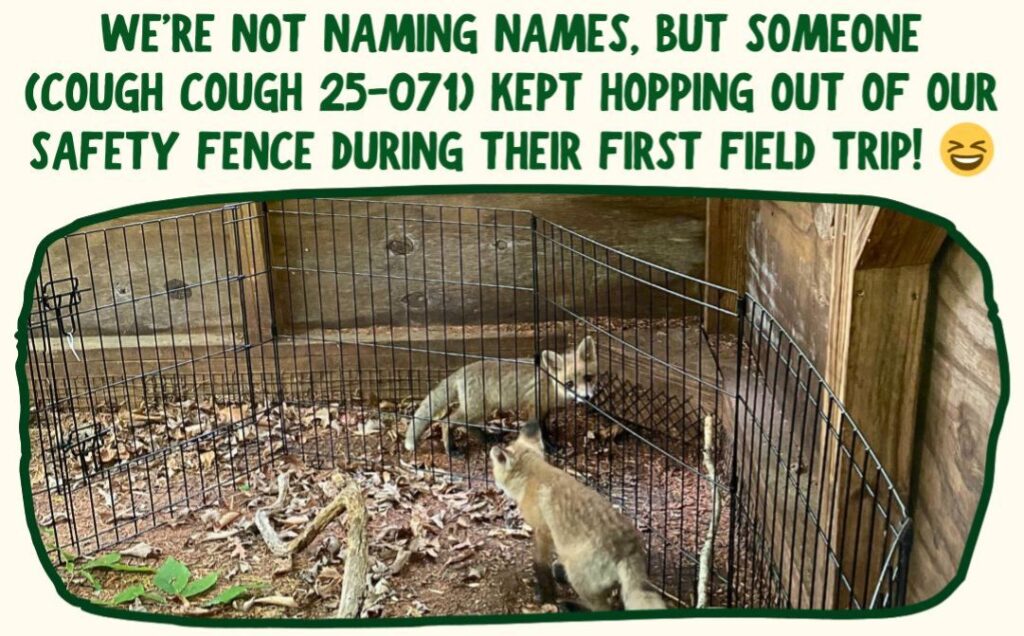
If both fox kit patients continue to progress according to plan, we look forward to releasing them in mid-September. That might seem like a long time to stay in care, but kits stay with their mother until then in the wild. Come early fall, kits disperse from their birth families and work to establish their own territories. They may travel 20–40 miles in search of a new territory to call home, and some males have traveled as far as 150 miles after leaving their birth den! For now, though, these two young kits will just be traveling between our outdoor enclosure and indoor nursery. 😆
At RWS, we do everything we can to ensure wildlife gets the best possible chance at returning to the wild. That includes expert care, age-appropriate diets, engaging enrichment, prey testing, and—perhaps most importantly—natural companionship when it matters most. 🦊🦊
Thank you for learning about red fox kit 25-071 and his new friend. Stay tuned for more updates!
If you’d like to support these kits, please click the button below to make a tax-deductible donation today.
May 16, 2025
Published:
These kits are so adorable!! And the write up is so informative, I learned so much!
Thanks so much for reading, Josh! Glad you enjoyed seeing the kits! 🦊
Such a great story! The fox pups are so adorable! They even could form a family after release.
Thanks so much for reading about these cute kits! They’re getting closer to release each day. 🥳